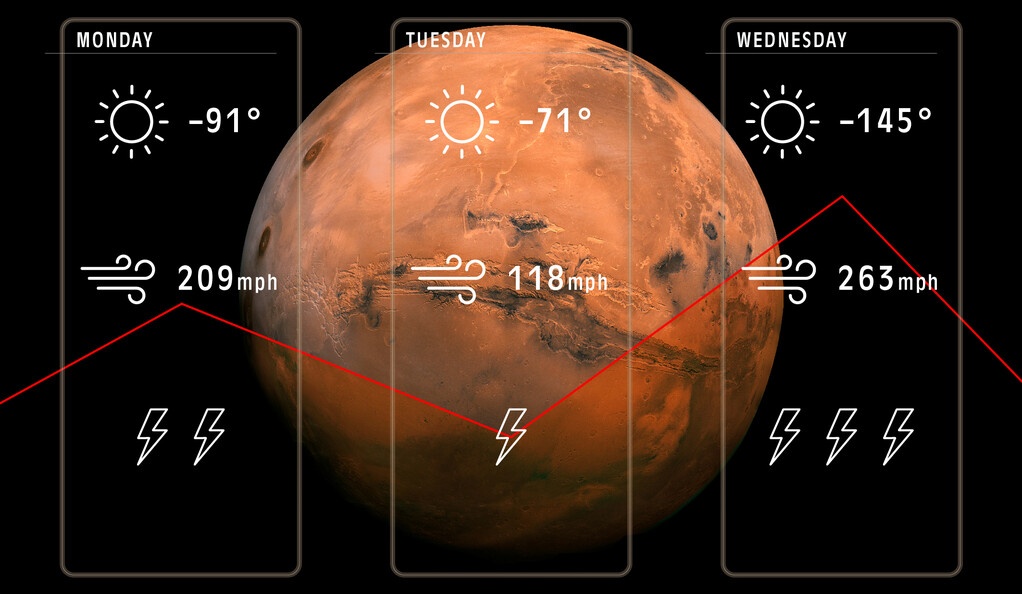Even meteorologists who forecast the weather on Earth admit that they can’t always accurately predict the weather at a specific location on our planet any given time. And so, attempting to forecast the atmospheric conditions on another world can be downright impossible.
But a new study suggests that an oft-used forecasting technique on Earth can be applied to other worlds as well, such as on Mars or Titan, Saturn’s largest moon.
“I believe the first accurate forecasts of perhaps a few Mars days may be only a decade away,” said lead author of the study published in Nature Astronomy, J. Michael Battalio, a postdoctoral researcher from Yale University. “It is just a matter of combining better observational datasets with sufficiently refined numerical models.
The technique uses a phenomenon related to Earth’s jet stream, called annular modes. Annular modes are variabilities in Earth’s atmospheric flow which are not related to seasonal changes. Annular nodes can impact the jet stream, cloud formation and precipitation across the world. These modes also explain some of the lack of consistency in wind eddies, or the air circulations in New England’s blizzards and severe Midwest storms.
Battalio wondered if there were similar weather patterns on places like Mars and Titan. He and his colleagues analyzed 15 years of atmospheric observations from Mars and discovered that, similar to Earth, the Red Planet has annular modes. Juan Lora, Battalio’s professor at Yale, also developed a global climate model to search for annular modes on Titan.

What they found is that annular modes are likely even more influential on these two worlds than they are on Earth. Annular modes account for half of the wind variability on Mars and at least two-thirds of it on Titan.
On Mars, Titan, and Earth’s modes each occur regularly. Because the annular modes impact the eddies that cause dust storms, real-time analysis of the annular modes enables simple predictions of dust storms without having to rely on a complex model, the researchers said.
“The fact that we have found annular modes on worlds as different from Earth as Mars and Titan also means they may be ubiquitous in planetary atmospheres, from Venus, to the gas giants or exoplanets,” said Battalio, in a press release.
“Methane clouds and surface changes caused by methane rain on Titan have been observed before,” added Lora. “And now it seems these events are connected to shifts of Titan’s strong jet stream, influenced by its annular modes.”

Mars is typically a windy world, with dust storms that can cover the entire planet. Various robotic missions humans have sent to Mars’ surface have had weather instruments, from the Phoenix lander’s Telltale, which provided wind data, to the Perseverance rover’s Mars Environmental Dynamics Analyzer (MEDA) measures and provides daily and seasonal reports on atmospheric pressure, humidity, ultraviolet radiation at the Martian surface, air temperature, and ground temperature around the rover.
The plethora of images gathered by the Mars Reconnaissance Orbiter spacecraft have also allowed astronomers to gain much deeper information on weather systems on Mars.
Being able to predict storms on other worlds would be important for robotic missions, but also for future human missions as well.

“Understanding and predicting these events is vital for the safety of missions, particularly those that rely on solar power, but also for all missions as they land on the surface,” Battalio said.
Further reading:
Yale University Press Release
Nature Astronomy
Lead image caption: Illustration by Michael S. Helfenbein; Image courtesy of NASA/JPL-Caltech.

